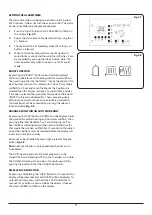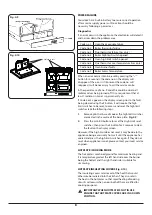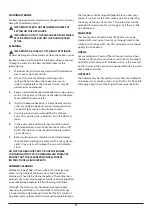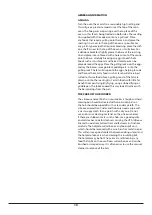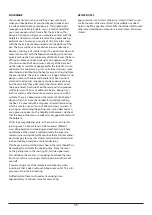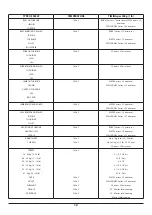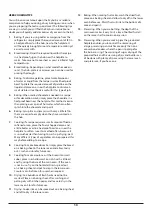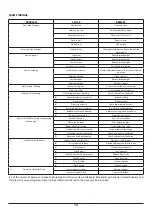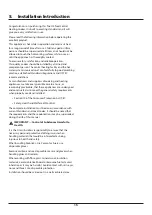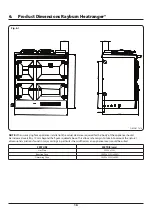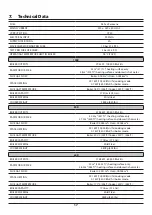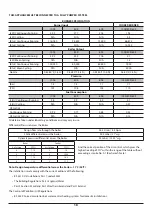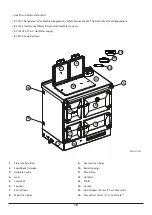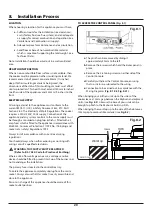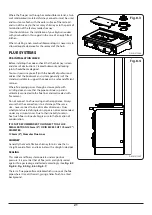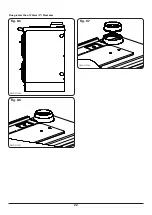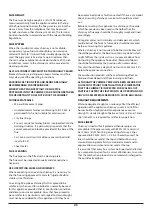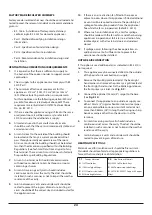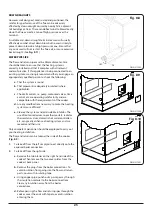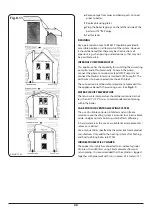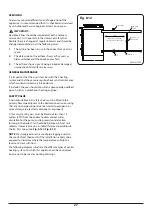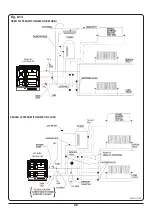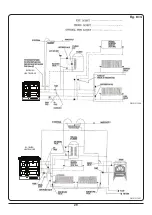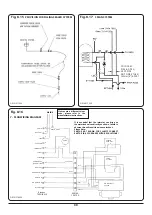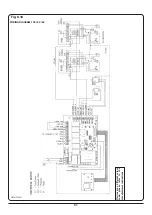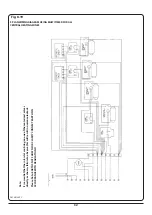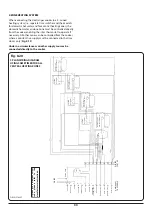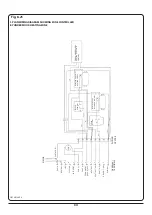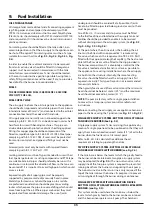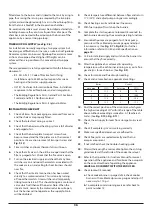
21
Where the flue passes through a combustible material, a twin
wall solid packed insulated chimney connector must be used
and must come flush with the outer surface of the material
and run all the way to the masonry chimney or to the point of
termination of the factory made chimney.
(You should discuss the installation of your Rayburn cooker
with your builder in this regard in the case of a newly fitted
kitchen.
When installing a non-combustible worktop, it is necessary to
allow adequate clearance for the removal of the hob.
FLUE SYSTEMS
PRE-INSTALLATION CHECK
Before installing the cooker, check that the chimney is clean
and clear of obstructions. Cracked brickwork and leaking
joints should be made good.
You must reassure yourself (with the benefit of professional
advice) that the brickwork and system generally is of the
standard suitable to support the cooker in a safe and efficient
manner.
Where flue piping passes through a closure plate with
a sliding door, ensure that the pipe continues up and is
ultimately connected to the flue liner and well-sealed with
fire cement.
Do not connect to a flue serving another appliance. Always
ensure that the connection is to a chimney of the same
size - never connect to one of smaller dimensions. Flues
wholly constructed of single skin pipe are not recommended
under any circumstances. Due to their inability to retain
heat such flues will inevitably give rise to the formation of
condensation.
IT IS NOT RECOMMENDED TO CONNECT TO A FLUE
SMALLER THAN 125mm (5”) OR IN EXCESS OF 175mm (7”)
DIAMETER.
125mm (5”) Diameter Flue Liner
CHIMNEY
Generally the most effective chimney for oil is one that is
straight, avoid offsets and terminate with a straight sided pot.
SEALING
This cooker and flue system operate under a positive
pressure. It is essential that all flue joints are tightly sealed
against flue gas leakage and tested accordingly. (See
There is a flue pipe collar available which surrounds the flue
pipe where it meets the wall, giving a tidier finish to a tiled
background.
Fig. 8.3
Fig. 8.4
DESN 517984
DESN 517985

